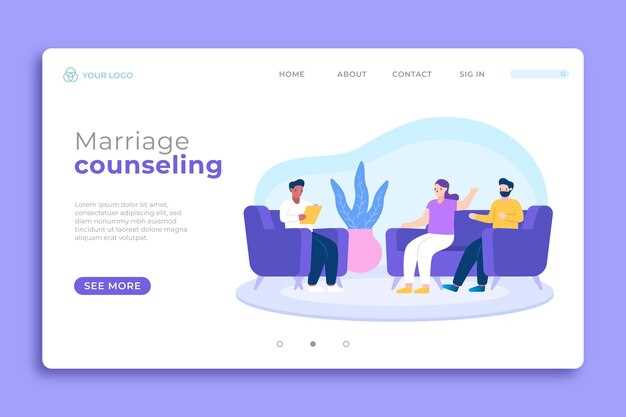Get a recognized certificate in client pairing ethics and practical matching methods. The program length ranges 8–12 weeks, with modules on psychology basics, intake interviews, consent, privacy, and evidence-based listening. Typical tuition sits between $900 and $2,500, with hands-on capstone projects and supervised client trials. Completing a capstone that documents a real intake, assessment, and action plan yields a portfolio piece clients value.
Build a measurable portfolio to demonstrate impact. Maintain a log of at least 12 intake sessions, with anonymized outcomes; track metrics such as interview-to-connection ratio, time-to-match, and client satisfaction (target 85%+). Publish 6–8 case studies showing structured approach and ethics compliance. Use a simple CRM to schedule sessions, record preferences, and protect privacy.
Choose a niche to accelerate credibility. Urban professionals aged 28–45 seeking long-term compatibility top the demand list in large metro areas. Starter retainer ranges commonly run from $700 to $2,000 monthly; success-based bonuses can add 5%–15% of annual revenue. Align services with a transparent pricing model and a written code of conduct to increase trust and client retention.
Invest in ongoing education and mentorship. Attend 2–3 live workshops each year, plus quarterly peer reviews of case files. Seek approval from an industry mentor to review intake scripts, consent language, and data handling. Pair your learning with ethical guidelines and a personal improvement plan, then track progress quarterly.
Prepare Client Intake Scripts and Practice Delivering Them
Draft a 6- to 8-question intake script and rehearse aloud three times weekly; record each delivery and annotate 10 data fields per client.
Structure includes a brief welcome, a 90-second discovery on relationship aims, a 2-minute section on lifestyle, location, schedule, and dealbreakers, followed by a 30-second outline of next steps.
Include consent, privacy commitments, and expectations about sharing notes with trusted partners; obtain explicit OK before proceeding.
Capture concrete data points: target timeline, partner traits (habits, hobbies, education), non-negotiables, daily routine, location constraints, travel willingness, and communication style.
Practice plan: two role-play sessions weekly, 15 minutes each, with an observer scoring on clarity, completeness, and rapport using a 3-point scale.
Use a reusable script template: a 20-second intro, two 60-second discovery blocks, a 20-second closing, and a 10-second transition to the next step.
Sample opening lines: “Hi [Name], I want to map out your aims, daily rhythm, and non-negotiables so we can align options quickly.”
Build a Matching Criteria Matrix and Candidate Profile Templates
Implement a 6-criterion scoring matrix with weighted categories and two ready-to-use candidate sheets to standardize evaluations. Assign weights so the sum equals 1.0. Example categories: Alignment with core goals (0.25), Availability and pace (0.15), Core competencies (0.20), Communication style and responsiveness (0.15), Cultural fit and values (0.15), References and outcomes (0.10).
Matrix design: in a spreadsheet, create columns labeled Criterion, Weight, Score (0–5), Rationale, Evidence/Notes; add a Total cell that computes by summing Weight × Score. Initialize scores with 0–5 based on documented data, then fill Narrative evidence to support each rating. Run a calibration session with 3–5 profiles to align interpretation across evaluators, and adjust weights if results consistently diverge.
Candidate Profile Template A captures the core data: Name or Identifier, Snapshot (target role, top strengths, relevant experiences), Availability and Location (time zone, travel tolerance), Core Skills (bullets with measurable outcomes), Cultural Fit indicators (values alignment, collaboration style), Engagement Preferences (preferred cadence, communication norms), Red Flags (deal-breakers), References overview, Next steps (recommended action, deadlines).
Candidate Profile Template B focuses on depth: Key projects with measurable impact, Tech stack or tools, Problem-solving examples, Stakeholder outcomes, Behavioral indicators, Salary expectations and notice period, Compliance or security considerations, Optional notes from the interviewer pool. Include a short justification section for each scored criterion to improve transparency.
Governance and usage: store templates in a shared, access-controlled workspace; lock formulae to prevent accidental edits; require at least one corroborating data point per rating; maintain anonymized summaries when sharing with clients or partners; conduct quarterly reviews to refresh criteria and reflect shifting needs.
Conduct Short Simulation Sessions and Debrief with Feedback
Start with two 12–15 minute simulations, each followed by a 10 minute debrief using a simple rubric. Assign a rotating observer to capture listening cues, open questions, and the overall tone.
Structure roles: client seeking alignment, facilitator, observer recording notes.
Prepare prompts: intake questions, needs check, expectation setting, plus scenario prompts for common friction: misaligned goals, vague criteria, or delayed feedback.
During debrief, cite two concrete actions, one adjustment, and one new habit, with a brief example from the session.
Use a simple scoring card: five-point scale on communication, listening, probing, and closing.
Provide written notes within 24 hours; share with the participant and the peer audience.
Schedule a quick follow-up within 3 days; reuse the same rubric; compare changes.
Store outcomes in a shared sheet; track improvement across two cycles.
Ensure consent for any recording; redact details; protect confidentiality.





